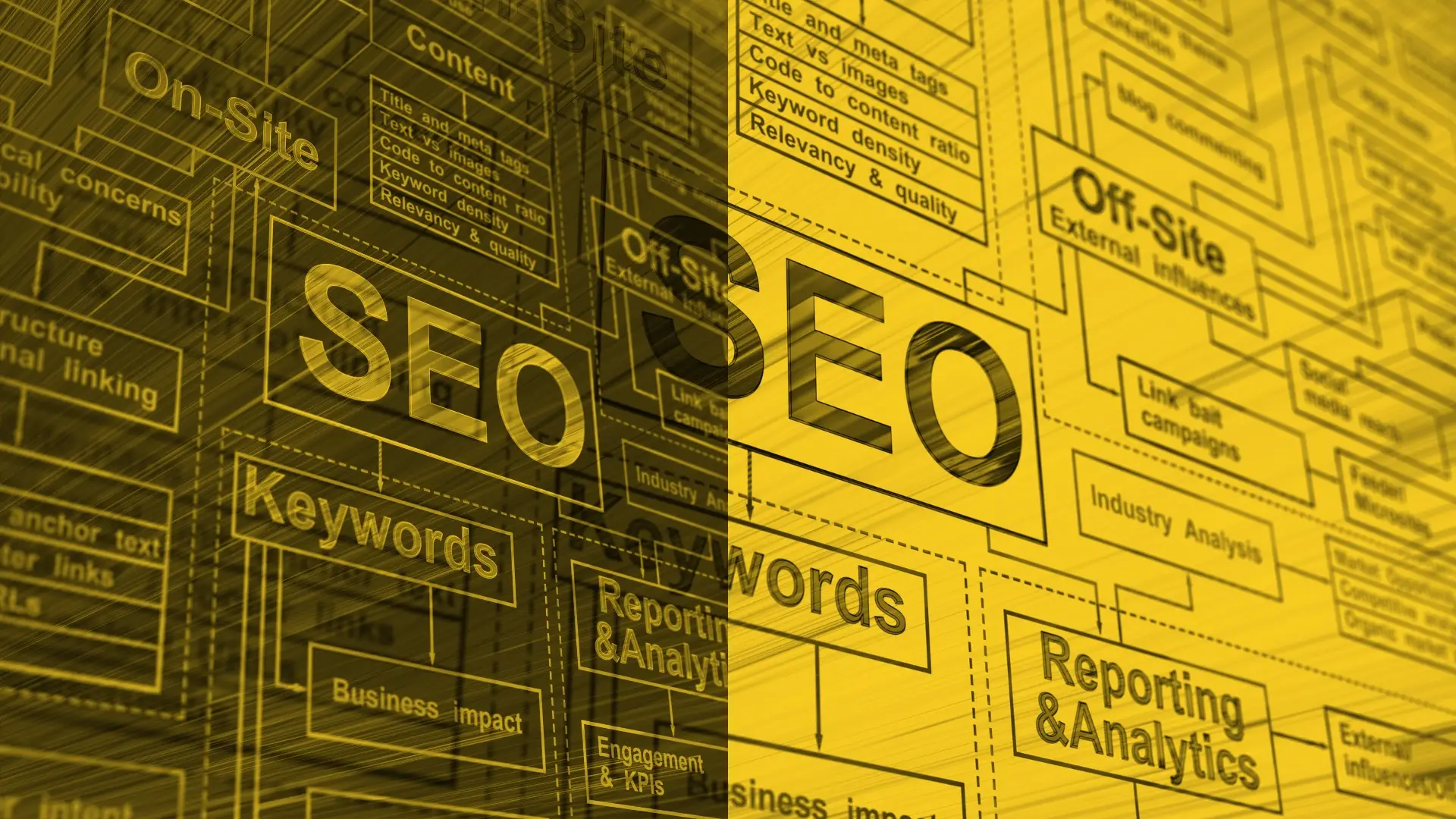How Suggestive Systems Are Replacing Search
The classic marketing funnel is dead weight in an AI-powered ecosystem.
It assumes a clean progression through the progression path. Awareness, interest, consideration, conversion. That model worked when media was scheduled, intent was linear, and control sat with the marketer. But today’s buyer journey doesn’t move stage-by-stage. It loops, pivots, and doubles back, driven by real-time engagement signals and automated response systems.
AI doesn’t just optimize the funnel, it overwrites it. Instead of pushing users through stages, AI systems create feedback loops that adapt to user behavior in the moment. Discovery isn’t just triggered by a search or a click anymore; it’s predicted by patterns in micro-interactions. Engagement feeds personalization. Personalization drives retention. Retention informs future acquisition.
This is where the flywheel model takes over.
Linear funnels rely on manual segmentation and static logic. Each stage is gated—move to the next only if the user behaves a certain way. But AI breaks those gates. With tools like real-time personalization engines, event-based messaging, and behavior-driven automation, every touchpoint is both a reaction and a test. You’re no longer waiting for intent signals; you’re constantly probing for them.
And here’s the operational consequence: your marketing system needs to be always on. Not just “always running,” but always learning. If your email cadence, paid media, and on-site experience don’t talk to each other in real time, your feedback loop is broken—and your performance will plateau.
Top‑middle‑bottom funnel logic still applies to reporting and media planning, but as a campaign execution model, it’s too rigid. AI makes the customer journey circular. Predictive insights replace stage-gated flows. And the result isn’t just speed, it’s compounding accuracy.
This is the foundation of the AI-powered marketing loop: capture engagement, feed it into prediction systems, and adjust the next touchpoint dynamically—across channels and formats.
| Funnel Stage | Traditional Logic | Suggestive Logic (AI-Driven) |
| Awareness | Broad targeting by persona | Predictive signals trigger micro-segmentation |
| Consideration | Static product pages, comparison content | Conversational interfaces, dynamic recommenders |
| Conversion | One-time CTA | Personalized post-purchase loops |
| Optimization | Manual A/B testing | Real-time model-driven iteration |
Search Becomes Suggest
Search used to be the front door. A customer had a need, typed a query, and your job was to intercept them with the right keyword and landing page. That’s over now. AI has flipped the model. Discovery no longer begins with human intent— starts with machine suggestion.
Whether it’s Google’s AI overviews, Meta’s Reels algorithm, or Amazon’s “frequently bought together,” the buyer journey is increasingly shaped before a query is ever typed. Algorithms are reading behavior patterns, content signals, and contextual metadata to surface what they think users want—without waiting for the user to declare it.
This is the shift from search to suggest. And it changes everything.
Generative AI and recommendation engines don’t wait. They nudge. Platforms like TikTok, YouTube, and Google’s Search Generative Experience (SGE) are training users to expect relevant results before they ask. And when that’s the default, the entire SEO/SEM logic stack gets challenged.
Ranking for queries isn’t enough when the interface doesn’t show links. Structuring your PDPs around keywords isn’t enough when product discovery happens in reels, chatbots, and AI-generated answer boxes. What matters now is relevance as determined by the algorithm, not just by the user.
That means marketers need to optimize for contextual resonance, not just keywords. For example:
- Data quality matters more than ever—in structured data, in data feeds, in page copy, in product_type hierarchies, and image metadata. Data feeds the machinery of suggestion logic.
- Engagement signals (CTR, time on page, add-to-cart rate) are now ranking inputs, not just performance metrics.
- Behavioral data—what someone watches, likes, hovers over—creates intent signals before any “intent-based” search.
If you’re still treating SEO as a keyword game and SEM as a bidding war, you’re optimizing for a shrinking share of user behavior. In a suggest-first world, your visibility depends on how well your content, structured data, and creative match the machine’s idea of relevance—not just the user’s.
The job now isn’t just being present when someone searches. It’s making sure you’re already there when they open the app, swipe the feed, or start a conversation with a chatbot.
Awareness Turns Predictive
In a traditional funnel, awareness is a broadcast play: hit as many eyeballs as possible, hope the right ones respond, and nurture from there. But AI doesn’t need a wide net—it needs a wide dataset. With the right signals, it can pinpoint interest before it surfaces and deliver content that feels serendipitously timed.
In other words: awareness no longer starts with reach. It starts with recognition.
Predictive AI models can now flag users before they declare intent—by analyzing lookalike behavior, content engagement patterns, and in-platform signals (like dwell time, topic affinity, or even swipe speed). You’re not chasing impressions; you’re targeting pre-intent clusters.
Platform algorithms are already doing this. Meta’s Advantage+ shopping campaigns don’t just retarget—they proactively seek users who might act like converters, even if they’ve never seen your brand. Google’s Demand Gen campaigns operate the same way—using predictive signals to seed audiences before search intent appears.
Marketers who still rely on static personas or cold broad targeting are paying for reach that platforms already know how to optimize—if they’re fed the right signals.
That means:
- Your creative library needs to be structured for modular testing—so predictive systems can match formats to inferred intent.
- You need to feed platforms first-party engagement data (site activity, add-to-cart behavior, email opens) to enrich their lookalike modeling.
- Content cadence matters: AI thrives on consistent inputs. Gaps in campaign delivery reduce the data available for predictive targeting.
You’re not just running awareness anymore—you’re training an intent model. The smarter your data inputs (event tagging, product affinity signals, creative mappings), the more efficient your prospecting becomes. Instead of spending to generate attention, you’re spending to accelerate alignment—getting in front of the right people before they realize they’re in-market.
And that’s not just cheaper—it’s faster. Predictive awareness lets you shorten the funnel by skipping the “convince me” phase entirely.

Consideration Becomes Conversation
Traditionally, consideration meant content: comparison charts, FAQs, reviews, demos—static assets designed to educate and persuade. But in an AI-mediated experience, content isn’t consumed. It’s interacted with. Evaluation has become a real-time dialogue.
AI tools like shopping assistants, product recommendation engines, and natural-language chat interfaces now guide buyers through decisions as they happen. Instead of sifting through product pages, users can ask, “Which laptop is best for video editing under $1,000?” and get tailored responses that blend reviews, specs, and even current promotions.
We’re not talking about chatbots anymore. This is a full-blown conversational layer across your mid-funnel.
Normally, the static middle-of-funnel UX is a bottleneck. When users have to do the work—browse, compare, calculate—they drop off. Conversational AI eliminates that friction. It meets users in their decision process and accelerates it by turning passive exploration into dynamic assistance.
Look at:
- Meta Advantage+ Catalog Ads: Dynamic product selection + AI-driven placement = personalized conversations in scrollable form.
- Amazon’s AI-powered buying guides: Natural-language Q&A engines that replace filter-clicking with dialogue.
- On-site AI assistants (via tools like Klevu or Salesforce Einstein): Turn PDP browsing into guided exploration, surfacing high-converting products faster than a user ever could.
And the kicker? Every interaction creates more data. What users ask, skip, or hover over becomes fuel for optimization.
If you’re still measuring consideration by pageviews or time-on-site, you’re missing the point. The new KPI is conversational engagement—how often a user interacts with intelligent systems that guide their decision.
This mid-funnel shift demands a redesign of your experience layer. Static carousels and buried FAQs won’t cut it. You need structured data, embedded AI interfaces, and logic that adapts in real time. Because when the assistant is the interface, your job isn’t just to educate—it’s to participate.

When Conversion Becomes Continuity
In a traditional funnel, conversion is the win. The goal. The point where marketing hands off to retention—if at all. But with AI in the loop, conversion isn’t an end point. It’s a trigger for the next cycle.
Every sale generates new behavioral data: product preferences, timing patterns, channel affinity. AI uses that data to personalize post-purchase experiences in real time—turning one transaction into a continuous optimization loop.
You’re not just tracking what was bought but also predicting what comes next.
Retention isn’t a drip campaign anymore. It’s a live system. Here’s how that looks in practice:
- Cross-sell and upsell logic adapts dynamically—tools like Klaviyo’s predictive analytics or Bloomreach’s AI recommenders tailor next-step offers based on affinity and timing, not static flows.
- Loyalty and rewards systems respond to behavior—offering incentives based on predicted churn risk, not elapsed time.
- Creative refreshes can be automated—based on purchase cycles, category fatigue, or user-level value scores.
Platforms like Shopify Flow, and Zapier support this kind of reactive logic. But AI takes it further: it doesn’t just respond, it forecasts.
For example:
- Someone who buys every 6 weeks but suddenly stops? Flagged.
- A user whose cart behavior mimics high-LTV buyers? Fast-tracked to VIP offers.
- A customer whose product history shows a seasonal pattern? Served timely re-engagement with predictive timing.
If your conversion logic ends at the thank-you page, you’re wasting your best data.
Every purchase should feed back into product affinity modeling, lifetime value scoring, and predictive sequencing. AI doesn’t just help you retain—it helps you compound. Because post-purchase isn’t follow-up, it’s forecasting.
This is how high-performing teams shift their north star from ROAS to predictive LTV—and why automation without AI is now just a delay in decision-making.

Optimization Without End
Optimization used to happen on a schedule: we pulled reports, ran A/B tests, tweaked bids, relaunched. It was episodic and reactive by design. But with AI integrated into the core of our stack, optimization becomes a continuous process. Not a singular task but an operating system.
AI doesn’t just analyze performance—it learns from it. Reinforcement learning models adjust campaigns mid-flight. Content engines re-rank assets based on engagement velocity. Smart bidding evolves based on conversion probability, not static CPA targets. Optimization is no longer a phase. It’s ambient.
Manual optimization doesn’t scale—not at the speed today’s platforms demand. Google Performance Max, Meta Advantage+, Amazon’s dynamic creative—they all rely on feedback loops that update automatically. If your team is still operating on weekly reporting cycles, you’re not just behind—you’re invisible.
What continuous optimization actually looks like:
- Ad creative is dynamically prioritized based on real-time CTR, view time, or conversion lag—not historical averages.
- Bidding models shift in-session based on contextual signals (location, time of day, device) and audience behavior trends.
- Landing page variants are served based on engagement patterns, often without explicit A/B testing involved.
And all of this is driven by AI interpreting performance signals and feeding that insight back into campaign logic—instantly.
The modern marketer doesn’t “optimize” in the traditional sense. They architect optimization systems.
Your role shifts from micro-managing levers to feeding the machine high-quality signals: clean feeds, consistent creative, properly tagged conversions, and structured performance feedback.
This is the new competitive baseline: real-time iteration, not reactive analysis. If your optimization is scheduled, your performance is capped.

Future Outlook? A Suggestive Ecosystem
This isn’t just a shift in tactics—it’s a rewiring of the entire marketing stack.
AI has collapsed the funnel into a living system. Search becomes suggestion. Awareness becomes prediction. Consideration becomes conversation. Conversion becomes continuity. Optimization becomes the default state.
The result? A suggestive ecosystem—a connected environment where content, commerce, and campaigns are orchestrated by algorithms that learn faster than any team can react. And in this system, the winners aren’t just visible. They’re inevitable.
Most brands are still optimizing for visibility: better rankings, higher ad placement, more impressions. But the platforms they rely on—Google, Meta, Amazon, TikTok—have moved on. Their systems don’t wait for signals. They anticipate them. If you’re not architecting for suggestibility, you’re not just late. You’re likely invisible.
This is what the next-gen marketing stack looks like:
- Recommendation engines drive homepage, app, and ad personalization—based on micro-patterns, not segments.
- Predictive analytics guide not just who to target, but when, how often, and with what content.
- Conversational interfaces collapse research and purchase into a single interaction.
- Creative systems evolve in real time, guided by engagement signals and contextual inputs.
And critically: all of these systems are interconnected. Suggestion logic isn’t just applied at the channel level—it spans the entire ecosystem.
If you take nothing else from this series opener, take this: the future of marketing isn’t about reach or clicks or even conversions. It’s about anticipation at scale.
To survive in a suggest-first ecosystem, your strategy has to shift from visibility to inevitability. That means:
- Structuring your data to feed prediction engines.
- Designing content that can flex across suggestive surfaces.
- Rethinking “funnels” as fluid systems driven by machine inference.
This isn’t optional. It’s operational. The brands who build for this now will own share-of-voice by default—because they won’t just be present. They’ll be preferred before the user even knows why.



